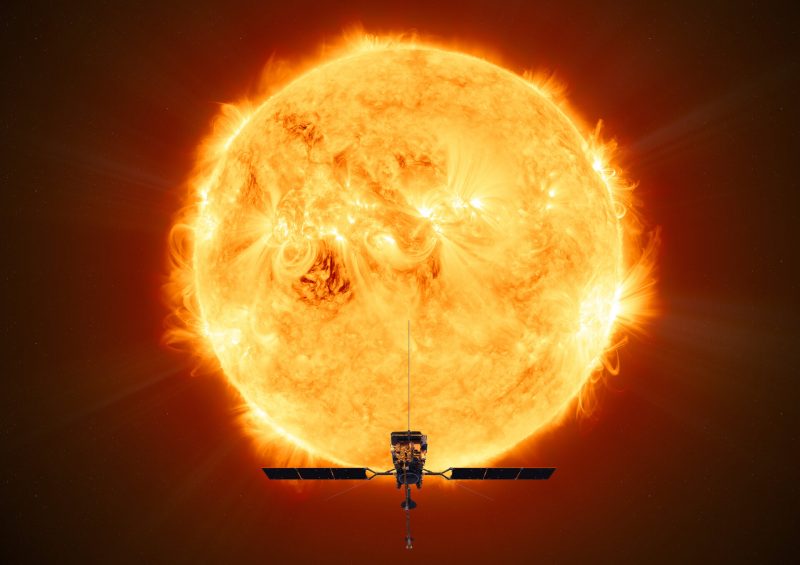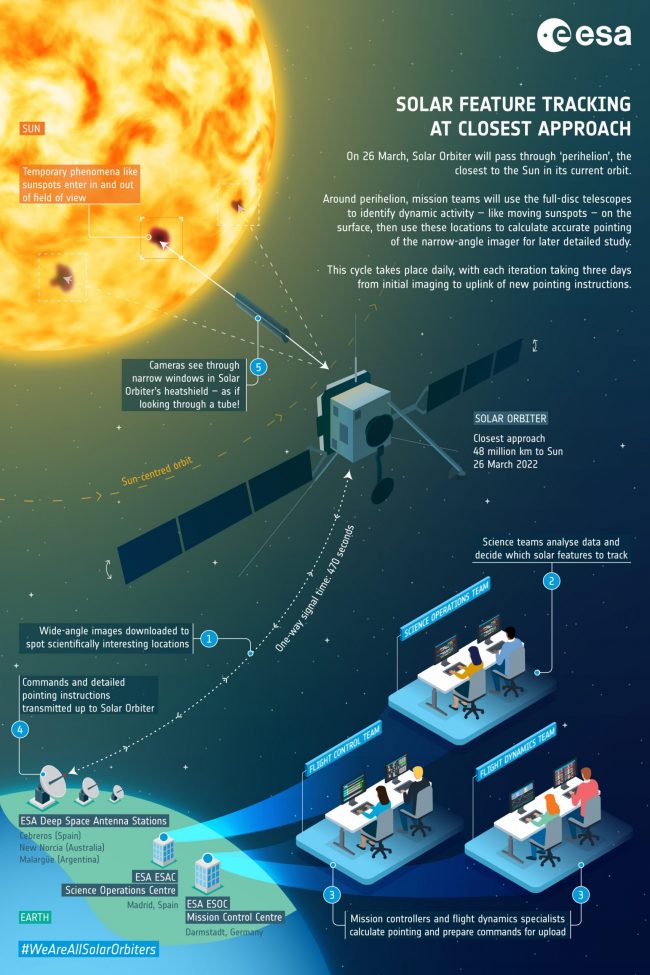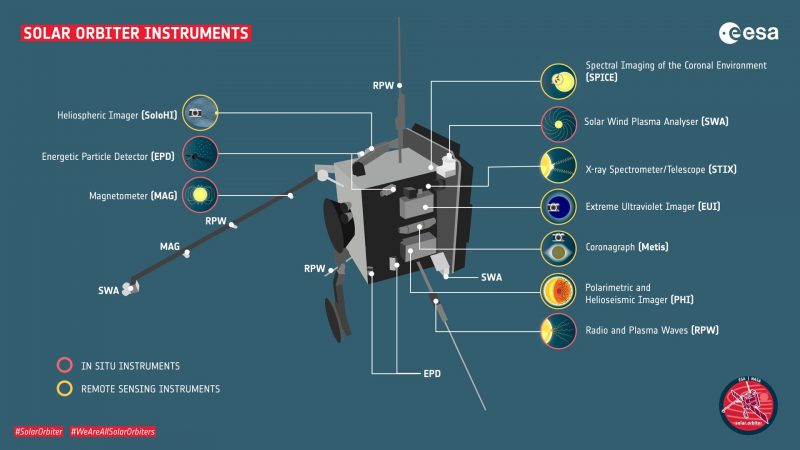
The Solar Orbiter spacecraft will make a historic first close pass of the sun on March 26, 2022. On this date, Solar Orbiter will be less than 1/3 the distance from the sun to Earth. That’s 29.8 million miles (48 million km) or about 1/3 of an astronomical unit (AU). It can survive this distance for an extended period of time. As Solar Orbiter reaches perihelion – its closest point to the sun – it will have all 10 instruments operating in order to provide views and data unlike anything we’ve seen before.

Solar Orbiter’s closest pass of the sun
Solar Orbiter will gather a variety of information from the sun. It will use its Extreme Ultraviolet Imager for high-resolution views. In-situ instruments will measure the solar wind as it flows past the spacecraft. Full-disk telescopes will identify dynamic activity – such as churning sunspots – on the surface. The narrow-angle imager will mark these locations for follow-up observations.
Because the instruments are fixed on the spacecraft, Solar Orbiter looks for targets using its wide-angle cameras to identify locations for future observations with its narrow-angle instruments. On the ground, teams in Germany and Spain coordinate the observing targets of interest.

Solar Orbiter vs Parker Solar Probe
Another solar instrument, the Parker Solar Probe, is also orbiting and studying the sun. This spacecraft holds the record for closest approach to the sun. While Solar Orbiter’s perihelion will take it inside the orbit of Mercury, Parker Solar Probe will eventually pass within 3.8 million miles (6.2 million kilometers) of the sun’s surface. But Solar Orbiter holds a larger suite of instruments in its mission to understand the sun.
Stay tuned to find out what exciting discoveries Solar Orbiter makes at the sun during its perihelion passage!
In the meantime, enjoy this image of the sun that Solar Orbiter took on March 7, 2022, when it was at 0.5 AU. See how far you can scroll in on stunning solar features.
Happy perihelion day! Today we're flying by the #Sun at about 48 million km, in one of many close perihelion passes throughout our mission. Here's a taste of what's to come ?https://t.co/2vOYZ7aw92 #WeAreAllSolarOrbiters pic.twitter.com/Zczk7MJFt2
— ESA's Solar Orbiter (@ESASolarOrbiter) March 26, 2022
Bottom line: Solar Orbiter will make a historically close pass of the sun on March 26, 2022. All 10 of its instruments will be operating to acquire close-up data.











